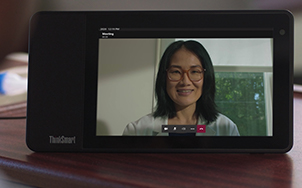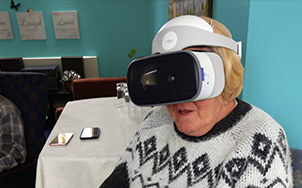Would Healthcare be better if doctors had two brains?
There are nearly 70,000 Source known diseases today, a few thousand drugs to treat them, and millions of possible combinations. Despite that overwhelming deluge of information, the doctors who take care of us do a great job keeping us healthy.
But wouldn’t it be great if they could have a little more help? Fortunately, assistance is on the way, thanks to smarter Artificial Intelligence (AI)—and the data scientists and IT champions that make it run.
A prescription for AI and predictive analytics—along with 3D modeling and remote reading—can help doctors improve accuracy and outcomes. That’s thanks to advancements in high-performance computing that manage complex and computationally-challenging workflows. Fewer errors, more pinpoint therapies, earlier and better diagnosis, and improved outcomes from procedures are healing news for doctors and patients alike.
The power of AI joins the fight against the Big C
And few things in healthcare need the help of AI more than cancer diagnosis and treatment. Already, leading research universities are working with Lenovo AI Innovation Centers on diagnostic models for various types of cancers to help make better diagnoses for patients.
Deep learning methodologies match MRIs or CT scans of new suspected cases with a huge database of cases previously diagnosed by thousands of doctors. It’s the ultimate expert consult for radiologists. AIs can do all this, but only when they’re backed up by a robust cloud computing environment mated to always-available scalable storage systems and quick-response resources that sit at the edge of the network.
But what happens when AI-assisted diagnosis meets other smarter technologies? You extend the diagnostic strength of major hospitals to front-line health centers, and that’s what Lenovo’s E-Health solution is doing. Currently focused on liver tumor analysis, E-Health incorporates physicians’ expertise with deep learning algorithms and 3D reconstruction modeling. It helps doctors better understand tumor parameters and more accurately interpret CT images. E-Health helps doctors communicate with patients, bringing more humanity, compassion, and trust to a difficult moment.
FEATURED SOLUTIONS

Lenovo Intelligent Computing Orchestration

Cloud Computing

Lenovo End-to-End Services
Redefining what’s possible in medicine
Thermal tumor ablation is a minimally invasive and promising cancer treatment. Still, it presents one main drawback preventing it from becoming a first-line treatment: physicians cannot visualize and control tissue damage in real-time. TechsoMed relied on Lenovo’s AI-optimized workstations to create and run BioTrace and give physicians the ability to see what was once hidden from view. With real-time, continuous monitoring and analysis throughout the procedure, BioTrace lets doctors maximize target tissue ablation while minimizing damage to healthy tissue. Plus, it dramatically reduces suffering and costs up to ten times less than radiation or chemotherapy. And all it takes is just a few minutes—and powerful AI algorithms developed and running on Lenovo’s smarter infrastructure solutions.
The innovations extend well beyond cancer treatment.
- Around the world, radiology is both understaffed and critical to patient care and hospitals. AI can help. With pattern recognition and machine learning, radiologists can tap into AI’s power to help prioritize patients and optimize physician time. It also provides a crucial second set of “eyes” that can reduce avoidable errors.
- With the help of Lenovo intelligent Computing Orchestration (LiCO), researchers at the Barcelona Supercomputing Center built and trained an AI model to detect retinal pathology in under ten minutes—potentially saving the sight of millions.
Smarter technology can save lives, but only in partnership with researchers, physicians, and patients. Optimizing the technology to meet changing challenges is the job of a different breed of healthcare partner: the IT professional. But with Lenovo’s Healthcare Services, they can concentrate on improving patient care and outcomes. By giving physicians the ability to tap into a wealth of AI, Lenovo and IT professionals devoted to healthcare enable a revolution in medical research and personalized treatment.












